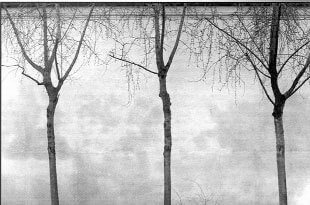Three symphonies by Pulitzer-winning Ned Rorem in new recording
Yet despite winning the 1976 Pulitzer Prize for his orchestral piece “Air Music,” earning renown as America’s indisputable master of the vocal idiom, and enjoying the luxury of spending the last 40 years of his life only writing music on commission, New York/Nantucket-based composer Ned Rorem has until now seen his early symphonies largely ignored.
All that is changing. As he approaches the October 23 celebration of his 80th birthday, America’s foremost living gay composer can rejoice that his first three symphonies are finally available on a bargain price disc.
In a recent phone conversation, Rorem pointed out that he has actually written four symphonies. While the second and fourth were commissioned works, the other two were composed “for the hell of it.”
As one might expect, Rorem wishes that his early symphonies had received good recordings 40 years ago. Nonetheless, he is pleased by the “very positive” reviews that have greeted his work. He also rightly praises the recording itself, which if not of demonstration quality, nonetheless presents a wonderfully atmospheric portrait of his music.
Though his three early symphonies more or less disappeared from view within a few years of their premiere––the Third Symphony fared best––Rorem’s Fourth Symphony, “String Symphony,” received a happier reception. It was first performed by Robert Shaw and the Atlanta Symphony, whose 1989 recording of the work, available on New World Records, won the Grammy Award for Best Orchestral Recording.
He has written program notes for many of his works, but the sometimes contradictory, perpetually depressed Rorem remains reluctant to discuss his compositions.
“I don’t like to talk about my own music; I don’t even like to read other composers talking about their music, because I think the music states it better,” he said. “God knows I never discuss my music aesthetically, because whatever there is to say about it is stated by the music itself.”
The First Symphony, which Rorem writes in the liner notes “could easily be called a suite,” was composed between 1948 and 1950. It received only a few performances before fading into relative obscurity. While there is no question that Rorem’s unabashed tonality grew increasingly out of favor during the reign of serial supremacy, Serebrier’s performance renders continued cold shoulder treatment incomprehensible.
Especially attractive is the final movement. With one of its themes taken from an Arab wedding tune Rorem heard on the radio while in Morocco, the music grows increasingly joyful and animated, with a finish that must have left the heady intellectuals of earlier decades desperate for multi-syllabic dismissals.
The Second Symphony, a 1956 commission by Nikolai Sokoloff, received the last of its few performances in 1959. Hopefully that will change. The pastoral quality of its lovely second movement unquestionably reflects Rorem’s excellence as a songwriter; the writing is as irresistible as the rollicking allegro that concludes the work.
Rorem’s Third Symphony, composed in 1958, got off to a happy start.
“When I showed it to Bernstein,” Rorem told me, “he decided to program it.”
After a successful New York Philharmonic premiere in Carnegie Hall, performances were sporadic, perhaps the most recent being by Andre Previn and the Curtis Institute of Music Orchestra in Carnegie Hall in 2000. The work has also received two prior recordings, one by Maurice Abravanel and the Utah Symphony––released on CD in a 2001 VOX box of American Orchestral Music (CDX 5092)––the other of the Bernstein premiere recently made available in a large boxed collection of New York Philharmonic broadcasts of American music.
The Third Symphony is a wonderfully rewarding work, one that deserves wide performance. Beginning with a big, mysterious opening Passacaglia, it transitions into a very attractive, jazzy second movement Allegro that was originally intended for two pianos. The Largo, Rorem’s favorite movement of the symphony, is dreamy and somnambulistic.
The fourth movement, Andante, intended as a farewell to France, impresses with colors reminiscent of impressionist paintings of the French countryside at twilight. Wistful and lovely, its beautiful atmosphere lingers long in the memory.
The same holds true for the final Allegro molto. With its castanets and snare drum, its bubbling woodwinds and dance-like lyricism, the movement grows to an affirming, joyous conclusion that will leave many listeners hitting “repeat.”




































